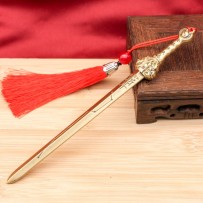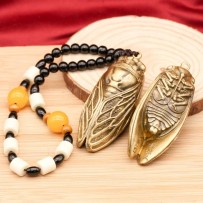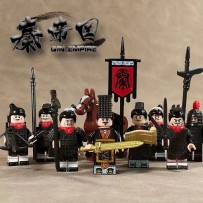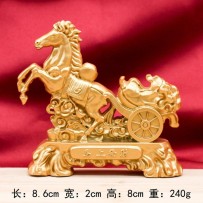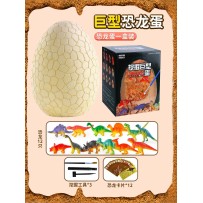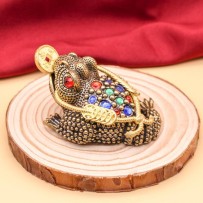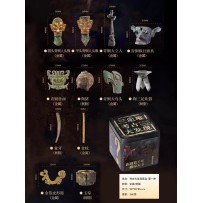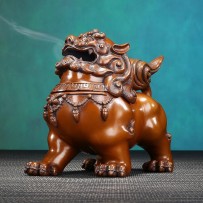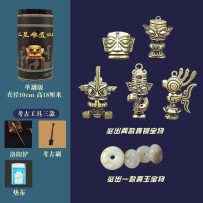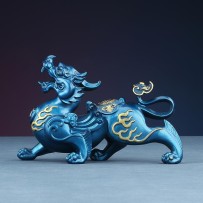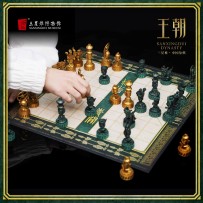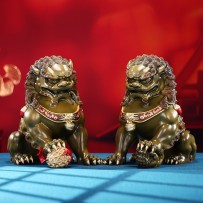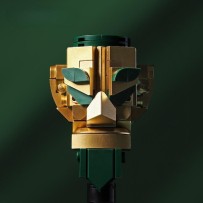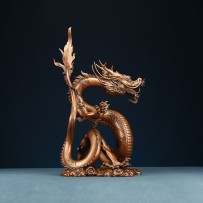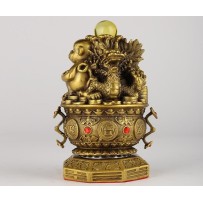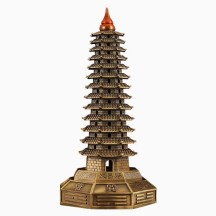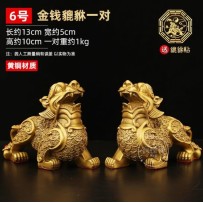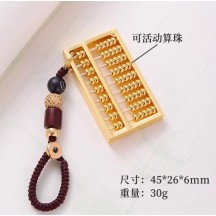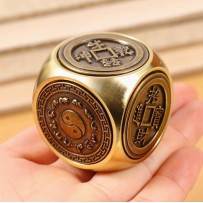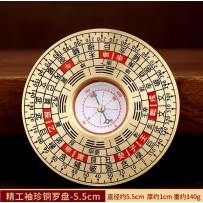Since ancient times, Taoists have used the "QiXing Sword" as a magical instrument for rituals, and even as a treasure to guard their sects. At that time, Buddhism and Taoism were both powerful, and both advocated the rise of martial arts. Therefore, Buddhism and Taoism greatly promoted the vigorous development of Chinese martial arts.
Subcategories
Active filters
Mahjong, as an ancient Chinese form of entertainment, carries rich cultural meaning in both its tile designs and gameplay. Its rules and strategies reflect traditional Chinese concepts such as "heavenly timing, geographical advantage, and human harmony," as well as deeper reflections on interpersonal relationships and life philosophy.
The ancients believed that the cicada was far away from the ground, lonely and proud, not eating worldly food, only drinking dew, and was a symbol of nobility.
The fortune ornament is a kind of ornament that combines traditional culture with the symbol of wealth. It contains rich meanings and represents the arrival of wealth and good luck.
The golden toad is one of the legendary auspicious animals that attract wealth. Now many businesses, entrepreneurs, financial practitioners, and even families are happy to place it. It not only has a beautiful effect, but also has the effect of increasing fortune.
The discovery of Sanxingdui shattered the traditional belief that ancient Chinese civilization originated solely in the Central Plains. It revealed a unique civilization nurtured in the Yangtze River Basin and demonstrated the diverse yet unified structure of Chinese civilization.
Spiritual beasts, also known as auspicious beasts or lucky beasts, refer to animals that symbolize good luck. They can be real in reality or mythical and fictional. The ancients believed that the appearance of spiritual beasts would be accompanied by auspicious events such as the birth of saints.
The Sanxingdui ancient site dates back 3,000 to 5,000 years and is the largest, longest-lasting, and most culturally rich ancient city site discovered in Southwest China to date. It is hailed as one of the greatest archaeological discoveries of the 20th century.
Spiritual beasts, auspicious beasts or auspicious beasts, that is, auspicious beasts, refer to animals that symbolize good luck. They can be real in reality or mythical and fictional. The ancients believed that when spiritual beasts appeared, they would be accompanied by auspicious events, such as the birth of saints.
The Sanxingdui ancient site dates back 3,000 to 5,000 years and is the largest, longest-lasting, and most culturally rich ancient city site discovered in Southwest China to date. It is hailed as one of the greatest archaeological discoveries of the 20th century.
The gate-guarding stone lions were a symbol of power and nobility in ancient times. The families of those who could afford to put stone lions in front of their doors were obviously more prosperous, which could be said to be a direct reflection of wealth and family prosperity.
The dragon is a well-known symbol of good fortune in China. For thousands of years, the Chinese people have placed countless beautiful hopes and wishes upon it.
The twelve zodiac figurines are designed with anthropomorphic features and varied forms, each embodying a unique and auspicious meaning.
The Wen Chang Pagoda is believed to house the knowledge of countless books and literary works. Also known as the Pagoda of Literary Star, Pen Pagoda, or Literary Peak Pagoda, it is one of the most commonly used Feng Shui symbols for enhancing wisdom, academic success, and intellectual growth. It is thought to greatly benefit studies, scholarly achievement, and career advancement.
In Chinese tradition, it is customary to decorate with Pixiu, a mythical creature rich in symbolic meaning. People believe that Pixiu brings joy and good fortune. From ancient times to the present, both emperors and commoners have placed great importance on collecting and wearing Pixiu. According to legend, beyond attracting wealth and warding off evil, Pixiu is also believed to protect the home, neutralize negative influences (such as Tai Sui), and even promote harmonious relationships.
The abacus is a manually operated calculating tool. It originated in China and is considered one of the important inventions of ancient Chinese civilization. Before the widespread use of Arabic numerals, the abacus was one of the most commonly used calculation tools in the world.
In ancient times, the luopan was used to guide direction and assess geographical knowledge, and thus it also came to symbolize wisdom and learning.
A themed series inspired by iconic figures from ancient Chinese classics, reimagining and preserving the passionate, proud, and righteous characters cherished in the hearts of the Chinese people—transforming them into companions for everyday life.










